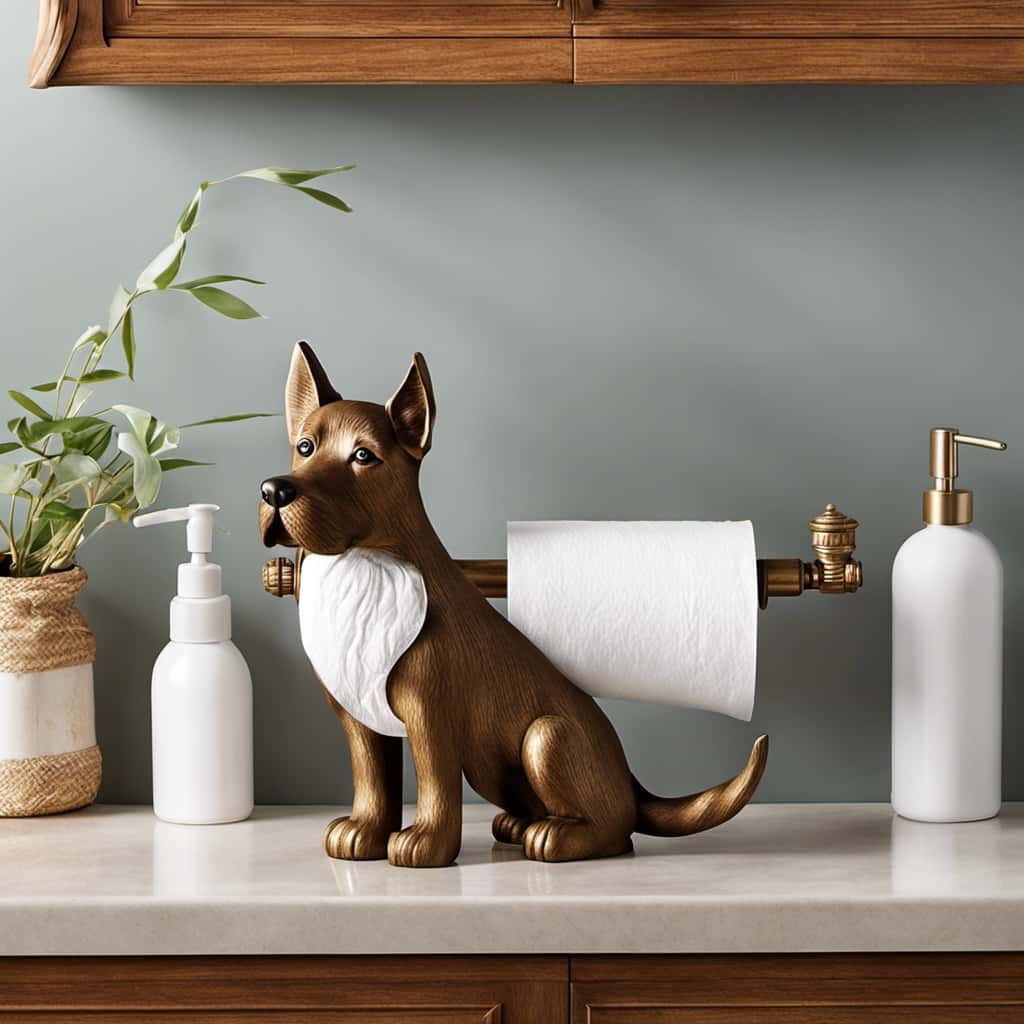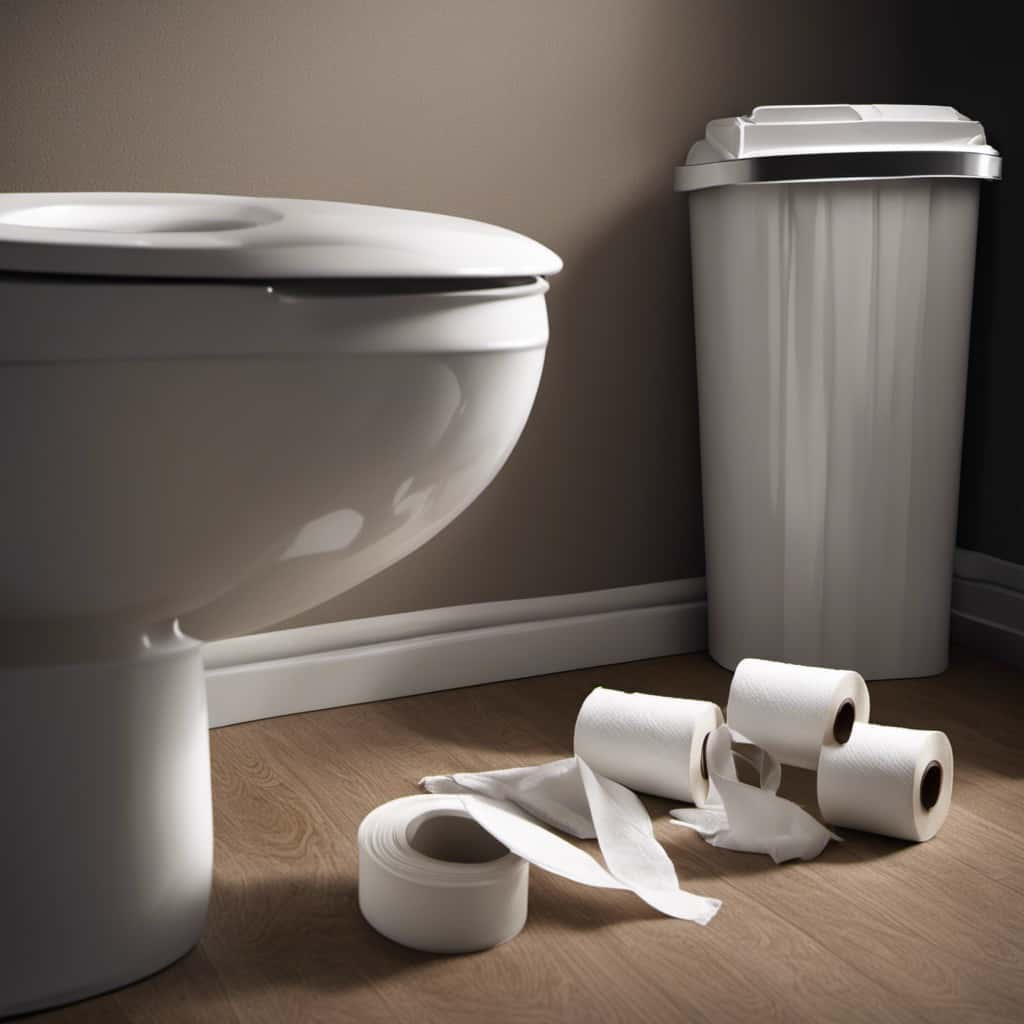We’ve all been there – the dreaded moment when the water in the toilet starts to rise, threatening to overflow. But fear not, for we have the solution.
In this brief guide, we’ll show you how to unblock a toilet when the water has risen. With a few simple steps and the right tools, you’ll be able to tackle this messy situation with ease.
So let’s dive in and master the art of unclogging toilets!
Key Takeaways
- Slow drainage and water rising to the brim indicate a blocked toilet.
- Unpleasant odors may indicate a blockage in the toilet.
- Buildup of toilet paper, waste, or foreign objects can cause blockages.
- Clogs in the main sewer line can also lead to toilet blockages.
Identify the Cause of the Blockage
To successfully unblock a toilet when the water has risen, we must first identify the cause of the blockage. Common signs of a blocked toilet include slow drainage, water rising to the brim, and unpleasant odors.
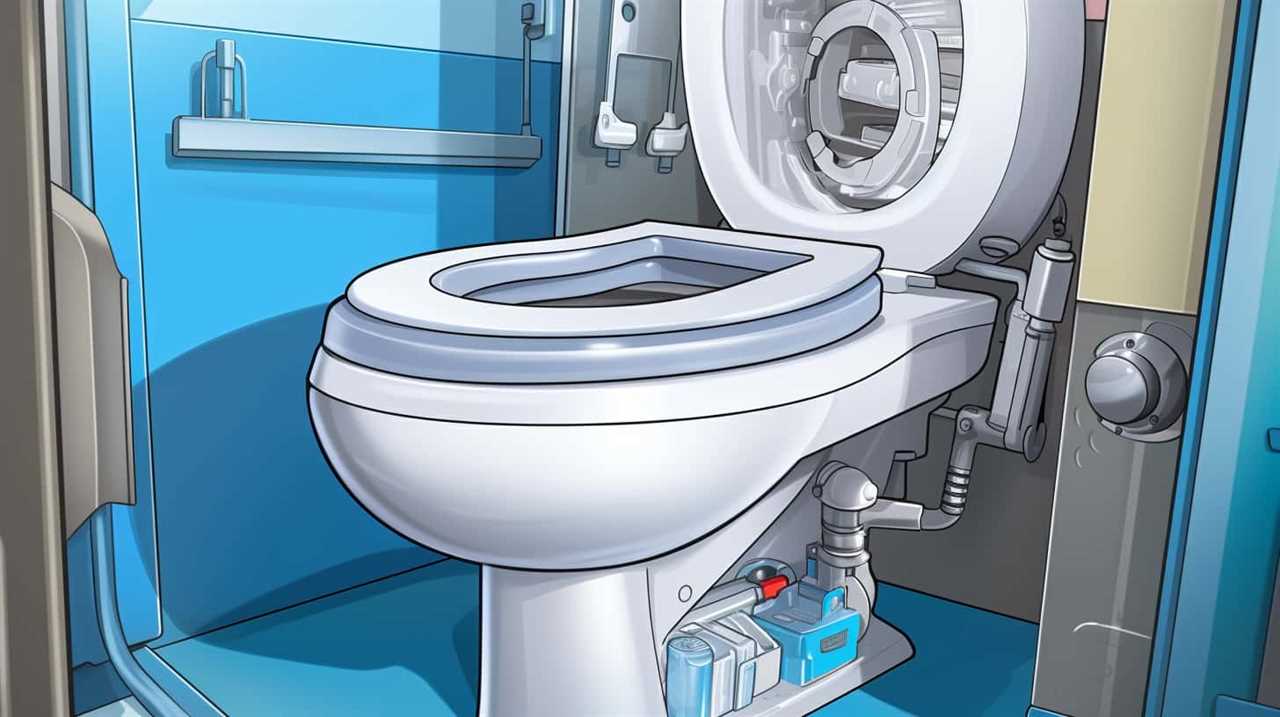
One possible cause is a buildup of toilet paper, waste, or foreign objects in the pipes. Another cause could be a clog in the main sewer line.
To prevent future toilet blockages, it’s important to use toilet paper sparingly and avoid flushing items that can easily clog the pipes, such as feminine hygiene products, wet wipes, and paper towels. Regular maintenance, such as using a plunger or a drain snake, can also help prevent blockages and keep the toilet running smoothly.
Gather the Necessary Tools and Materials
We will gather the necessary tools and materials to unblock the toilet when the water has risen. It is important to have the right equipment before attempting any toilet unblocking techniques. Below is a table listing the common causes of toilet blockages, along with the corresponding tools and materials needed to address each issue:
| Cause of Blockage | Tools and Materials |
|---|---|
| Excessive Toilet Paper | Plunger, Rubber Gloves |
| Foreign Objects | Toilet Auger, Bucket |
| Mineral Buildup | Vinegar, Baking Soda |
| Clogged Trap | Plunger, Toilet Brush |
Use a Plunger to Dislodge the Blockage
To dislodge the blockage, we’ll employ the use of a plunger. Here are the steps to effectively use a plunger for unblocking a toilet:
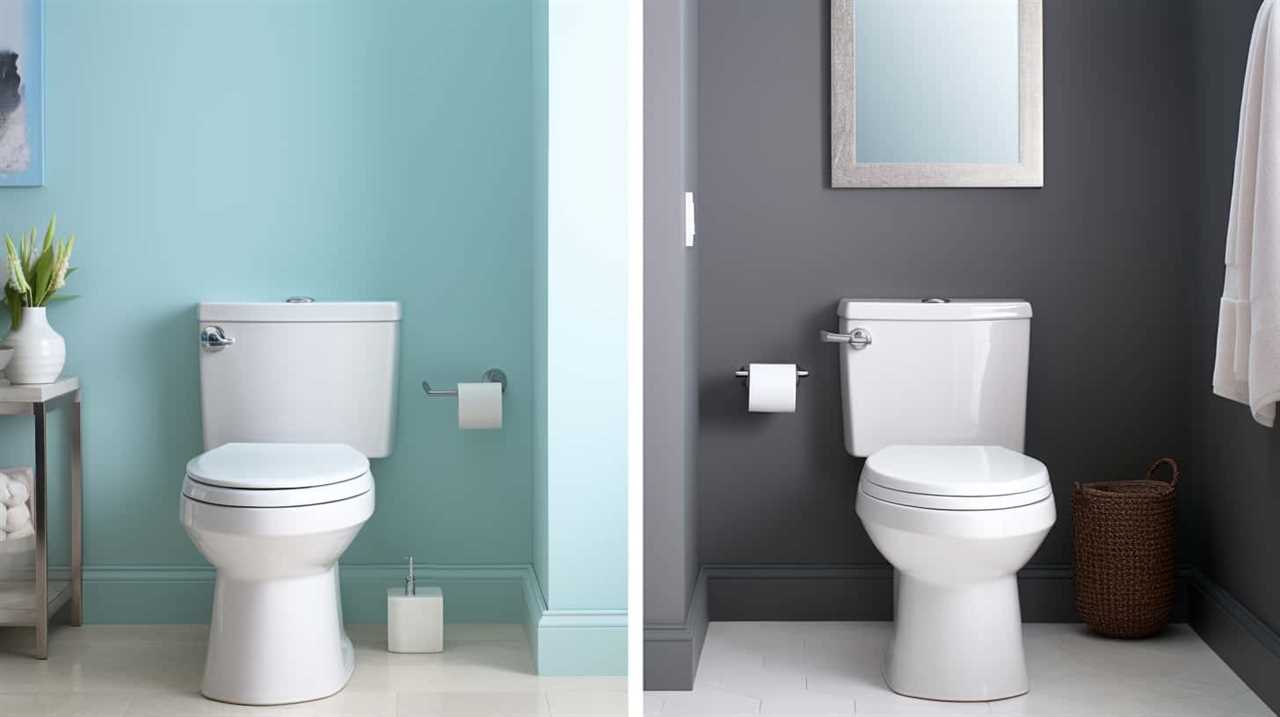
- Position the plunger: Place the plunger over the drain hole in the toilet bowl, ensuring a tight seal.
- Create suction: Press the plunger down firmly, then pull up quickly to create suction. Repeat this motion several times to dislodge the blockage.
- Check for progress: Flush the toilet to see if the water drains properly. If not, continue plunging until the blockage is cleared.
- Preventive measures: To avoid future blockages, practice regular toilet maintenance. Avoid flushing items that can cause clogs, such as sanitary products, wipes, or excessive toilet paper. Additionally, consider using a toilet auger or professional plumbing services for stubborn or recurring blockages.
Try Using a Toilet Auger for Stubborn Clogs
When the water has risen in a blocked toilet, one effective method to try is using a toilet auger. A toilet auger, also known as a closet auger or a water closet auger, is a tool specifically designed to clear stubborn clogs in toilets. It consists of a long, flexible cable with a curved end that can be inserted into the toilet’s drain. By rotating the handle, the auger can break up and remove the clog, restoring proper drainage.
Toilet augers offer several benefits over other methods of unclogging toilets. Firstly, they are specifically designed for toilet use, making them more effective at removing stubborn clogs. Secondly, they are less likely to splash water back at the user compared to plungers, providing a cleaner and more sanitary experience. Lastly, toilet augers are reusable and durable, making them a cost-effective long-term solution for dealing with toilet clogs.
In addition to using a toilet auger, it’s essential to take preventive measures to avoid future toilet clogs. Here are some tips to keep in mind:
| How to Prevent Toilet Clogs |
|---|
| 1. Properly dispose of waste |
| 2. Avoid flushing non-flushable items |
| 3. Use less toilet paper |
| 4. Regularly maintain your toilet |
| 5. Teach proper toilet usage to children |
Use Natural or Chemical Solutions to Break Down the Blockage
To break down the blockage, we can utilize natural or chemical solutions. Here are four options to consider:
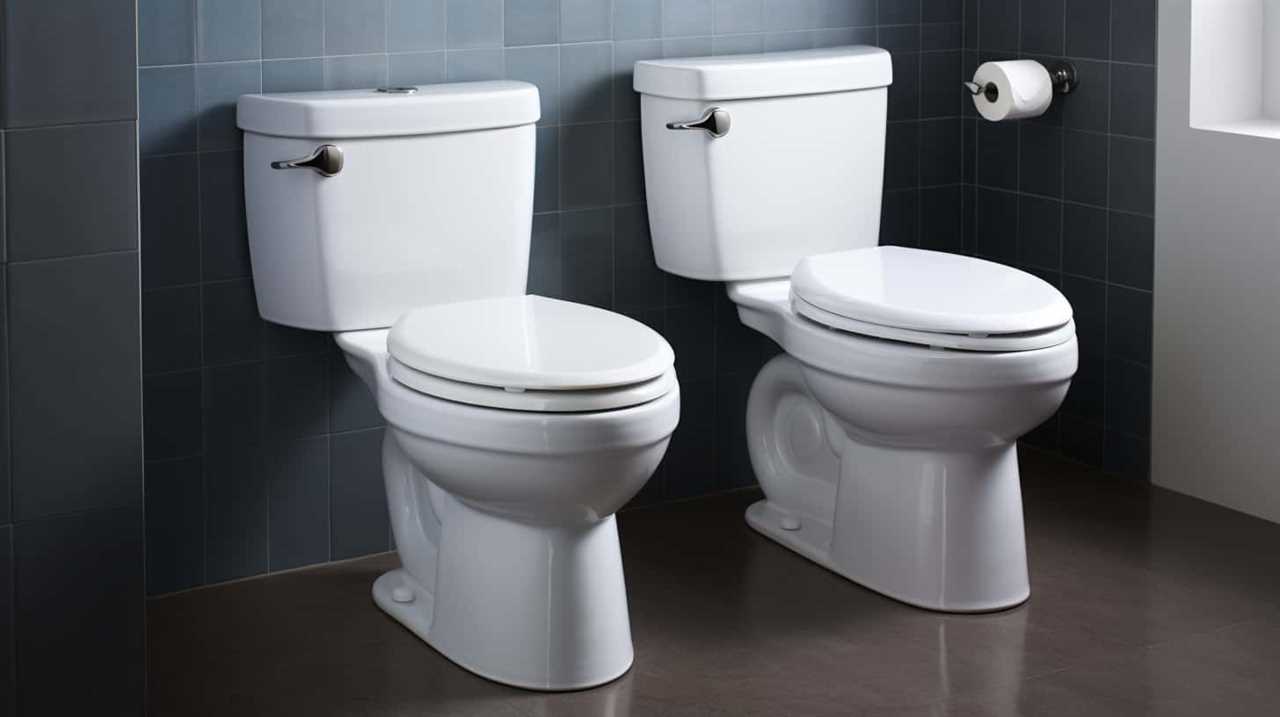
- Homemade remedies: Vinegar and baking soda can be mixed together to create a foaming solution that helps break down the blockage. Simply pour the mixture into the toilet bowl, let it sit for a while, and then flush with hot water.
- Enzyme-based cleaners: These cleaners contain natural enzymes that break down organic waste. They can be poured into the toilet bowl and left overnight to work their magic. In the morning, flush with hot water to clear the blockage.
- Chemical drain cleaners: These cleaners contain powerful chemicals that can dissolve stubborn blockages. However, they should be used with caution and according to the manufacturer’s instructions, as they can be harmful to the environment and your plumbing system if used incorrectly.
- Professional plumbing services: If the blockage persists despite your attempts with homemade or chemical solutions, it may be time to call in a professional plumber. They’ve the expertise and tools to effectively remove even the toughest blockages.
Frequently Asked Questions
How Long Does It Usually Take to Unblock a Toilet Using a Plunger?
To unblock a toilet using a plunger, it usually takes a few minutes of vigorous plunging. However, preventing toilet blockages is key. Make sure to use the plunger properly, creating a tight seal and applying forceful thrusts.
Are There Any Specific Safety Precautions to Take When Using a Toilet Auger?
When using a toilet auger, it is crucial to follow safety precautions. Always wear gloves and eye protection. Remember to use the proper technique, inserting the auger slowly and turning clockwise to clear the blockage.
Can I Use Natural Solutions to Unblock a Toilet if I Have a Septic System?
We can use natural remedies that are septic safe to unblock a toilet. It’s important to consider the specific needs of a septic system and choose solutions that won’t harm it.
What Are Some Common Signs of a Stubborn Blockage That May Require a Toilet Auger?
Signs of a stubborn blockage that may require a toilet auger include slow drainage, gurgling sounds, and foul odors. In one case, we encountered a clogged toilet that resulted in water rising and overflowing.
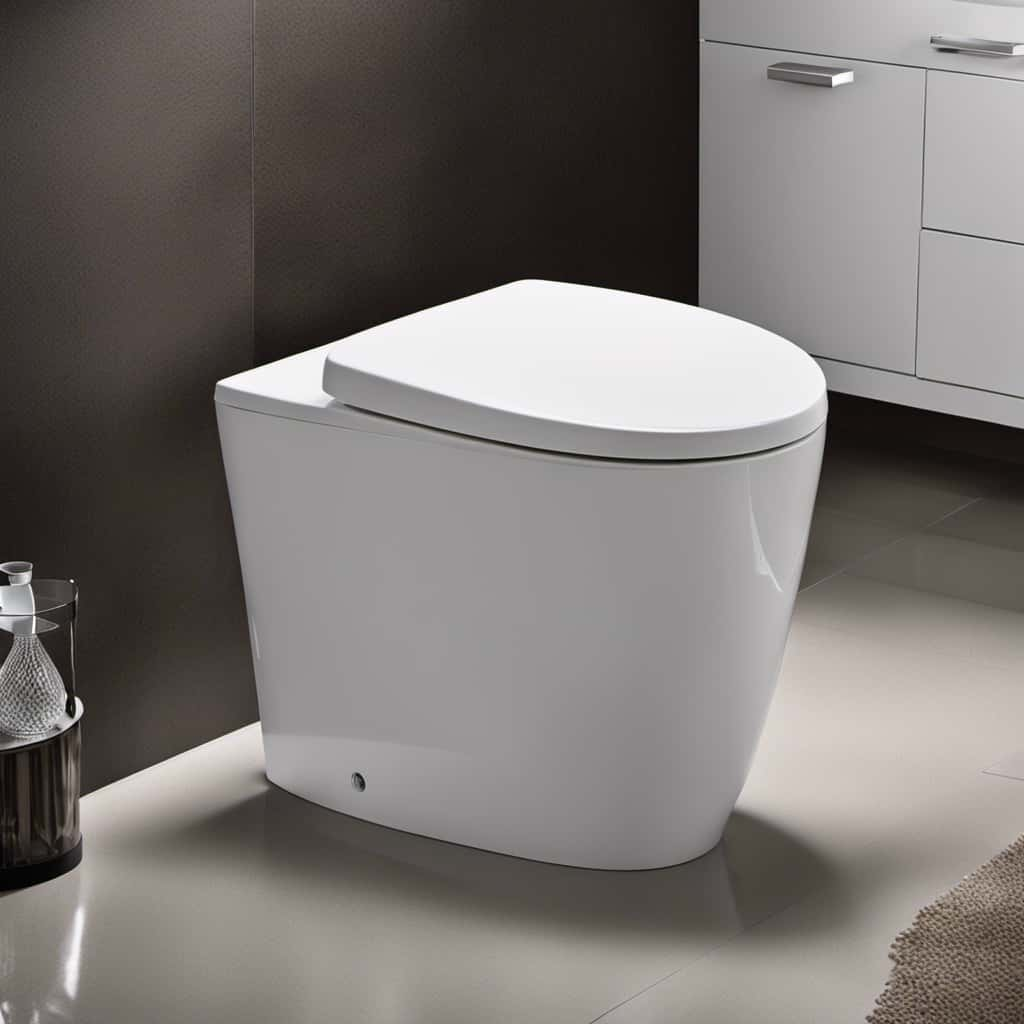
Are There Any Eco-Friendly Chemical Solutions Available for Breaking Down Toilet Blockages?
There are eco-friendly chemical alternatives and DIY natural remedies available for breaking down toilet blockages. These solutions can be effective in unblocking toilets without causing harm to the environment.
Conclusion
In conclusion, identifying the cause of a toilet blockage and using the right tools can help resolve the issue efficiently. Whether it’s a plunger or a toilet auger, these methods can dislodge stubborn clogs and restore proper water flow.
Additionally, natural or chemical solutions can be used to break down the blockage. So next time you find yourself dealing with a rising water level in your toilet, be prepared and tackle the problem with confidence.
Happy unblocking! (Rhetorical Device: Alliteration – ‘tackle the problem with confidence’)




